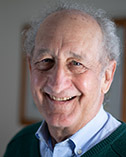
James N. Galloway
University of Virginia
|
Primary Section: 63, Environmental Sciences and Ecology Secondary Section: 64, Human Environmental Sciences Membership Type:
Member
(elected 2020)
|
Biosketch
James Galloway is a biogeochemist known for his work on the magnitude and consequences of the human alteration of biogeochemical cycles. His research includes investigations on the natural and anthropogenic controls on chemical cycles at the watershed, regional and global scales. He started first with trace metal biogeochemistry of the coastal ocean, and then expanded to investigations on the increased acidification of the atmosphere, soils and fresh waters. Most recently he has focused on the nitrogen cycle.
Galloway was born in Annapolis MD and grew up in Maryland and Southern California. He graduated from Whittier College with a BA in Biology and Chemistry, and from UCSD in 1972 with a PhD in Chemistry for his research on the fate of trace metals in a coastal ocean. Following two years as a professional potter in Lexington VA, he was a postdoctoral fellow in Ecology and Systematics at Cornell University. He joined the faculty of the Environmental Sciences Department at the University of Virginia in 1976, where he is now the Sidman P. Poole Professor of Environmental Sciences.
Research Interests
James Galloway’s current research focuses on beneficial and detrimental effects of reactive nitrogen as it cascades between the atmosphere, terrestrial ecosystems and freshwater and marine ecosystems. He approaches the topic from two perspectives—biogeochemical and translational. On the former, the amount of N2 converted to some form of reactive N increases yearly and is projected to do so in the future as population and per-capita use of resources increase. Immediate questions are, how much is created, where does it go, what does it do when it gets there? Longer term questions included what is the ultimate fate of this nitrogen? From the translational perspective, how does one communicate nitrogen-related issues to the general public? In that regard, he and his colleagues have developed a series of nitrogen footprint tools that can be used by individuals (country-specific), institutions and communities to first determine the entities’ contribution to negative nitrogen impacts, and then give them the ability to run scenarios on how to decrease the impacts. This most recent work examines how to maximize the use of nitrogen for beneficial purposes (i.e., food production), while minimizing its negative impacts on people and ecosystems.

